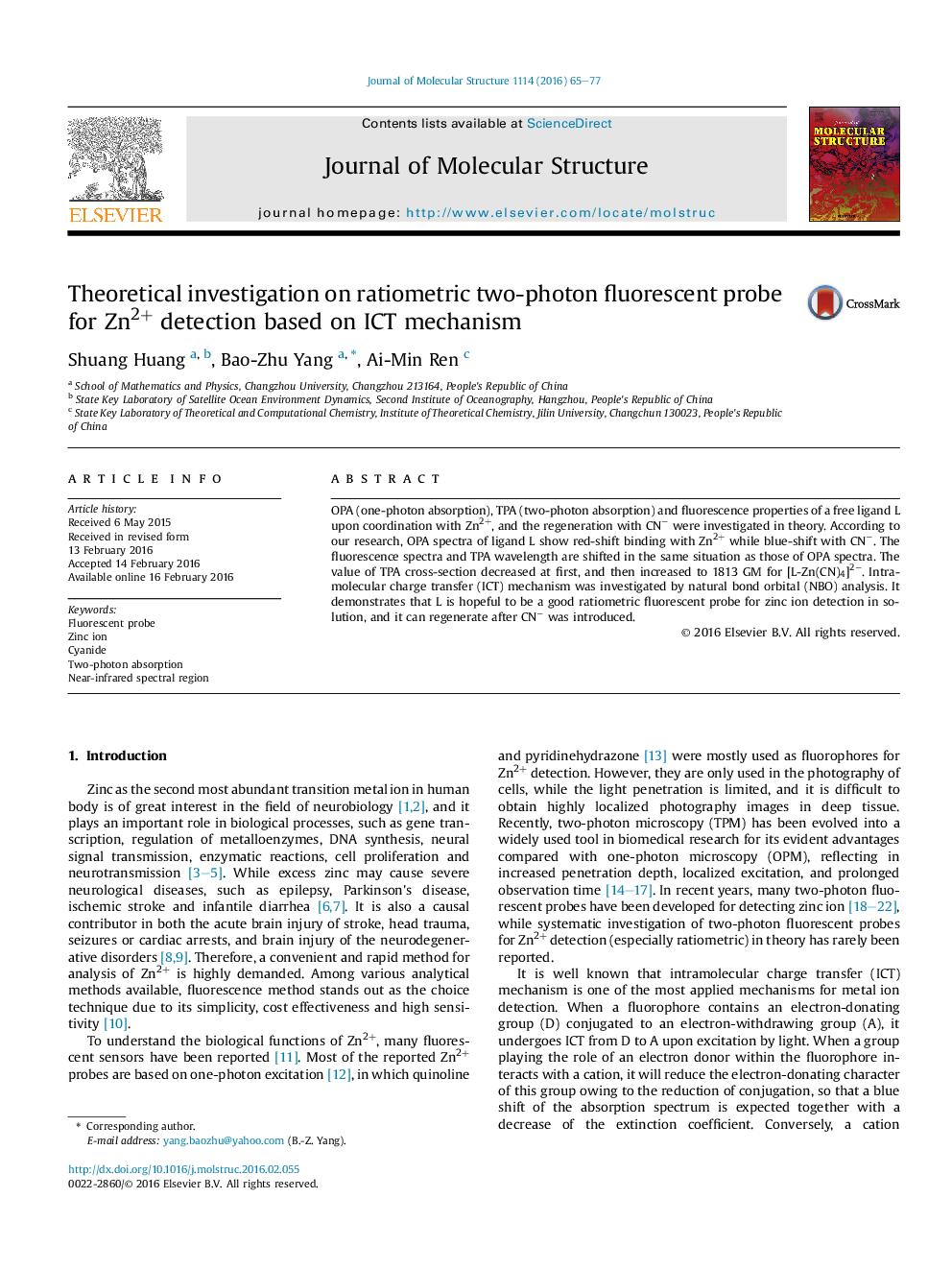| Article ID | Journal | Published Year | Pages | File Type |
|---|---|---|---|---|
| 1401218 | Journal of Molecular Structure | 2016 | 13 Pages |
•λOmax shows a red-shift upon binding of Zn2+, and a blue-shift after adding CN-.•λEMmax is shifted in the same direction as that of λOmax.•δmax of [L-Zn(CN)4]2- increases to 1813 GM at 615.6 nm.•ICT mechanism was investigated by NBO analysis.
OPA (one-photon absorption), TPA (two-photon absorption) and fluorescence properties of a free ligand L upon coordination with Zn2+, and the regeneration with CN− were investigated in theory. According to our research, OPA spectra of ligand L show red-shift binding with Zn2+ while blue-shift with CN−. The fluorescence spectra and TPA wavelength are shifted in the same situation as those of OPA spectra. The value of TPA cross-section decreased at first, and then increased to 1813 GM for [L-Zn(CN)4]2−. Intramolecular charge transfer (ICT) mechanism was investigated by natural bond orbital (NBO) analysis. It demonstrates that L is hopeful to be a good ratiometric fluorescent probe for zinc ion detection in solution, and it can regenerate after CN− was introduced.
Graphical abstractFigure optionsDownload full-size imageDownload as PowerPoint slide
